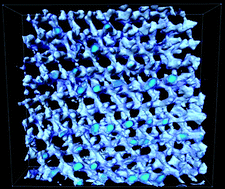Networked and chiral nanocomposites from ABC triblock terpolymer coassembly with transition metal oxide nanoparticles†
Abstract
Multicomponent materials with ordered nanoscale networks are critical for applications ranging from microelectronics to energy conversion and storage devices which require charge transport along 3-dimensional (3D) continuous pathways. The network symmetry can facilitate additional properties such as macroscopic polarization for piezoelectric, pyroelectric, and second-order nonlinear optical properties in non-centrosymmetric morphologies. Although pure


 Please wait while we load your content...
Please wait while we load your content...